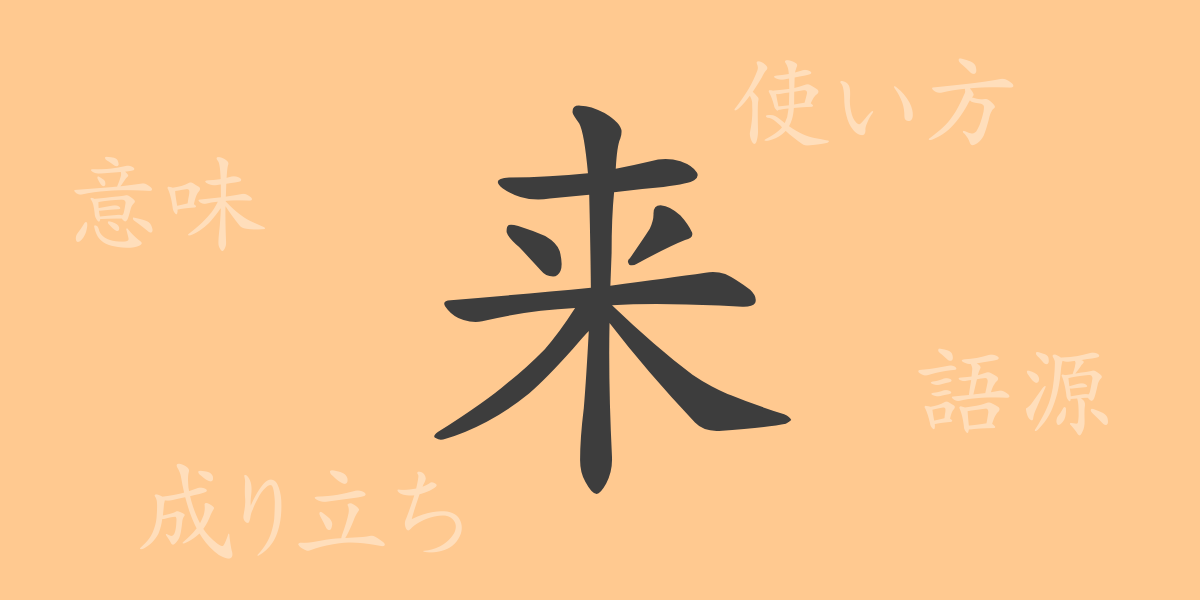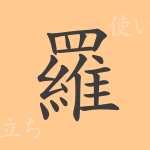The meaning and form of a single kanji character reflect the rich history and culture behind it. The common-use kanji “来” (rai) in Japan is no exception. This simple yet powerful character signifies the passage of time and events, making it an indispensable part of our daily conversations. In this article, we will delve into the origins, usage, and role of “来” (rai) in Japanese culture. Step into the world of “来” (rai), which embodies the beauty and complexity of the Japanese language.
The Origin of 来 (rai)
The kanji “来” (rai) has its origins in ancient China. Derived from pictographic characters, this kanji originally represented a symbol for a string tying together bundles of wheat. Over time, its shape evolved, and it now signifies concepts related to the flow of time and movement, such as “未来” (mirai, future) and “来る” (kuru, to come). This evolution vividly illustrates how language progresses alongside cultural and societal changes.
The Meaning and Usage of 来 (rai)
The kanji “来” (rai) is primarily used to mean “future” or “arrival.” As a verb, it means “to come,” and as a noun, it signifies “the next time” or “the time to come.” For example, it appears in terms indicating time like “来年” (rainen, next year), “来月” (raigetsu, next month), and “来週” (raishuu, next week), as well as in expressions that denote the movement of people, such as “来客” (raikyaku, visitor) and “来場者” (raijousha, attendee). In the context of the Japanese language, this kanji symbolizes the future and anticipation.
The Reading, Stroke Count, and Radical of 来 (rai)
“来” (rai) is one of the widely used kanji in Japanese, and its readings and form are part of basic knowledge.
- Readings: The on’yomi (音読み, Chinese reading) is “ライ” (rai), while the kun’yomi (訓読み, Japanese reading) includes “くる” (kuru), “きたる” (kitaru), and “こ” (ko).
- Stroke Count: The kanji “来” (rai) has 7 strokes.
- Radical: Its radical is “米” (kome, rice), but “来” (rai) itself also functions as a radical.
Idioms, Proverbs, and Phrases Using 来 (rai)
The kanji “来” (rai) is used in various idioms, proverbs, and phrases. These expressions demonstrate the richness and breadth of the Japanese language.
- 来年度 (rainen-do): Refers to the coming fiscal year.
- 来歴 (raireki): The history or background of a person or thing.
- 未来永劫 (mirai-eigou): Forever into the future, an unending continuation.
- 来る日も来る日も (kuru-hi mo kuru-hi mo): Day after day.
- 出る杭は打たれる (deru-kui wa utareru): A proverb meaning that those who stand out are often criticized or suppressed.
Summary of 来 (rai)
The kanji “来” (rai) carries a depth of meaning and history that belies its simple form. In Japanese, it is an essential character for indicating the flow of time and the movement of people, and it is used in many idioms and proverbs. We hope this article has helped you appreciate the multifaceted nature and charm of “来” (rai). For learners of Japanese, this kanji will be an important part of their journey.

























